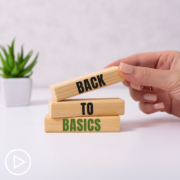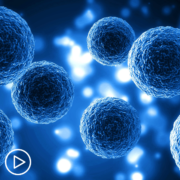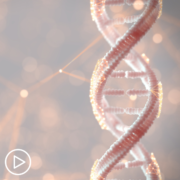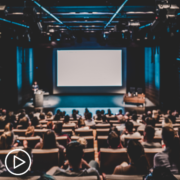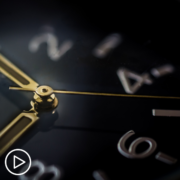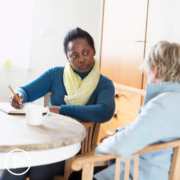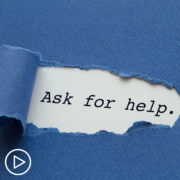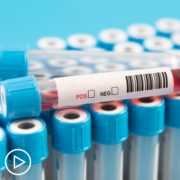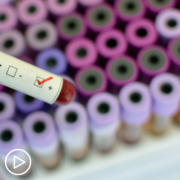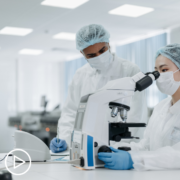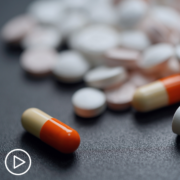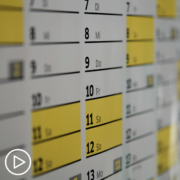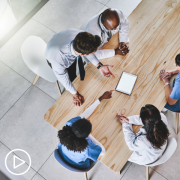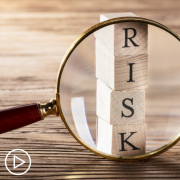Empowered AML Patient: Ask the AML Expert from Patient Empowerment Network on Vimeo.
For acute myeloid leukemia (AML) patients, how can they get the best care no matter location? Watch as expert Dr. Catherine Lai and AML patient Sasha Tanori discuss advancements in AML detection and treatments, the use of remote monitoring, questions to ask if you suspect you have AML, how AML can vary by age, and clinical trials access for optimal care.
See More from Best AML Care No Matter Where You Live
Related Resources:
Transcript:
Sasha Tanori:
I want to start off by saying, thank you so much for joining me, Dr. Lai, I greatly appreciate it.
Dr. Catherine Lai:
Thank you for having me.
Sasha Tanori:
Dr. Lai, early on before my diagnosis, AML, many of my doctors I saw dismissed my symptoms and attributed them to me being plus-sized. Can you share with us how detecting AML has evolved over the last several years?
Dr. Catherine Lai:
Yes, and I’m sorry to hear that, but what I would say about the diagnosis is that how we diagnose patients with AML, unfortunately, hasn’t changed significantly in the sense that we still have to rely on our standard techniques with the bone marrow biopsy. But what I would say is that the technology for how we risk-stratify patients and subsequently treat patients has improved because we have a better understanding of the molecular characteristics of AML now, and so it has helped us in terms of being able to identify more targeted treatments, where patients are more likely to respond and help us with both our short-term and our long-term plan.
Sasha Tanori:
Right, got it. My next question is, can you speak on how monitoring and treating AML has changed during the pandemic?
Dr. Catherine Lai:
Yeah, so unfortunately, as you experience it, you spent your induction in the hospital for several weeks, and when you’re able to be in the hospital with support, either from friends or from family, it makes the experience much, much easier and with COVID, especially at the height of the pandemic, we weren’t allowed our hospital. And I know several of my colleagues as well, the hospitals weren’t allowing any visitors and that put a lot of stress on the patient, on family members, on the staff, the nurses, the physicians, really the whole care team. Just because we were needing to spend extra time to make sure that everybody was updated, so either if we couldn’t do it on FaceTime, having to make sure other phone calls later, which is just…it is what it is. And we made the best of the situation. Currently, we are allowing to have a limited visitor policy, which is helpful. I think the other thing that has really changed is what we consider when we’re starting treatment, if patients obviously need induction chemotherapy and need to be in the hospital, we don’t change the recommendation based on that, but if there are patients who…
Dr. Catherine Lai:
There are options whether or not the patient is done inpatient versus outpatient, I think that that’s a huge consideration in terms of quality of life and how we manage those patients.
Sasha Tanori:
Can you speak to the advances and treatment options for high-risk AML patients?
Dr. Catherine Lai:
Yes, so fortunately, we have made a lot of progress in the AML space, that is one thing that is really exciting, I would say. Since 2017, there have been nine FDA approvals for AML, and prior to 2017, and we have been using the same chemotherapy for the last 40 years. Now, that’s not for lack of trying. There are many leukemia physicians who have been working at this for the duration of their careers, but AML just is very heterogeneous, and it’s very smart. It’s smarter than we are, and it’s constantly changing, and so that has made it challenging in terms of being able to treat it. So, there are newer treatment options, both modifications to traditional chemotherapy as well as other targeted therapies that have improved the landscape for AML and high-risk AML in particular. That’s awesome.
Sasha Tanori:
Dr. Lai, I think another factor that played a role in my diagnosis is somewhat being delayed is my age, I was 24 at the time, what are some questions others who suspect they have AML should ask to rule out the diagnosis?
Dr. Catherine Lai:
So, Sasha, that’s a really good question. And what I would say is that, as you are aware, the median age of AML diagnosis is 68, so not to say that we don’t have young patients…I have plenty of young patients, but it doesn’t come to…it’s not a common thing to think about in younger patients right off the bat, the other thing that contributes to that is also AML compared to other cancers is an uncommon cancer. There are only 25,000 cases of newly diagnosed in the United States per year because it’s not as common in younger patients and because it’s not that common…doctors often want to rule out other simple things rather than just going straight to a cancer diagnosis though, unfortunately, that can lead to some delays, what I would say in young patients who are healthy is that they shouldn’t have low blood counts that can’t be explained for other reasons. So, I think having prompt attention in terms of if their blood counts are abnormal, to really understanding why they’re abnormal, and those are things that can be easily work up, and if all those things are rolled out, then you’re talking about doing a bone marrow biopsy I don’t like to do procedures for unnecessary reasons, but it’s one of those things that you can also…
I mean, I think if you have a physician who is the astute and is thinking about that, that you can…you can get to a diagnosis pretty quickly, I mean AML is a diagnosis in the name acute. It comes on acutely, so that means days to week, so I suspect you are probably feeling very well and over a very short prior of time felt very unwell, and you’re very in tune to your body, and that is very important because patients are smarter than we give them credit for, and so being persistent and knowing that something is wrong goes a long way. Again, I’m sorry that you had to deal with that, and I’m glad that they finally made the right diagnosis, but I think just awareness and education. While it is an uncommon disease, I think having a larger burden and strain that happen on younger patients because you haven’t been working for the majority of your life, and it takes a huge toll on what your potential is, both as a person, but economically and all sorts of things. So it’s a huge problem
Sasha Tanori:
Does prognosis of AML vary by age?
Dr. Catherine Lai:
So, yes and no. So let me answer that in two steps, so it does in the sense that older patients are more likely to have more comorbidities, so more medical problems, and so therefore have a higher likelihood of having complications, and also as patients get older, they acquire more mutations and more abnormality, so those molecular abnormalities, and so therefore, older patients then are become more challenging to treat as well. What I would say though, is that we typically risk-stratify based on molecular factors, so the different mutation than somebody has and the age and the comorbidities don’t necessarily play into that role of stratification, so for example, whether or not you’re receiving a transplant or not…age is a factor, if you’re kind of in that little risk category, the intermediate risk category, the other thing I would say is that for young patients, they are able to tolerate because many don’t have medical problems, so they are able to tolerate treatment better, so when I’m talking about numbers and likelihood of response and overall survival, those…all those mediums assume that somebody is in their mid-60s, and so I adjust the numbers because for younger patients that those numbers are likely higher…
Because they’re less likely to have complications.
Sasha Tanori:
Right. I had many medical professionals that participated early on in my care. Can you speak on the role of the multidisciplinary care team that plays in AML care?
Dr. Catherine Lai:
Yeah, this is…this is an excellent question. I would say that treating leukemia is a team sport, everybody has their role, and it’s not just one person, and this is part of why I love treating leukemia patients, is that we’re able to engage multiple players, everybody is good at their particular thing, and so one analogy is that…we’re kind of like a baseball team, is that you want everybody to be able to do their own…have their own position. What a standard for our center is that we have the leukemia physician, there’s a specific leukemia nurse, we engage our social worker very early on, and also our cancer nutritionists and physical therapist and occupational therapist so we all work together at different parts of the treatment journey to make sure the patient is getting everything that they need and the whole person is being taken care of.
Sasha Tanori:
Right. AML patients, just like anyone else, want to live and live a very long time. Are AML patients at risk for secondary cancers, and are there any studies that speak on this?
Dr. Catherine Lai:
Yeah, so I would say everything has its risk and benefits at the time of diagnosis, you need the chemotherapy in order to get into remission, and then if you need the transplant, whether or not you’re getting radiation and then further some chemotherapy before the transplant, so that’s not without risks, so especially in a young patient, for example, in your particular case, you’re at risk for secondary treatment-related MDS and other bone marrow-related disorders that could occur, most patients who are in their 60s who, if they live long enough would be at risk, but most of those patients will die of something else before you have that opportunity. As a young patient, the other thing to be aware of, especially with, given that you’ve had transplant, is that the increased risk of cardiovascular effects, as well as making sure in patients who have had your whole-body radiation, other effects in terms of their thyroid, lung function, and then screening earlier for other cancers. So in terms of looking at studies, we know that these risks are slightly increased and that monitoring starts a lot sooner, especially in young patients. So I think just being aware of what you need to do.
Dr. Catherine Lai:
We also have a survivorship clinic, which I think is really important to help understand, you know what your risks are, because once your leukemia is in remission, we don’t want you to develop other medical problems, so it’s important just for patients to be educated so that they know how to take care of their body at each stage of their…again, of their journey.
Sasha Tanori:
Alrighty, after getting a bone marrow transplant three years later, I’m still dealing with graft-versus-host disease or GVHD, but there are other obstacles that I’m also facing. Does GVHD ever truly go away or is it something that I’m going to have to learn to live with?
Dr. Catherine Lai:
Yeah, I wish I had a magic answer for you. Our data is that it gives us guidance for each patient, but then also each patient as an individual and how they respond to different medications, and the nuances of that is…it can be different. So what I would say is that there are patients who you have chronic GVHD for years and it can eventually go away, and in some patients, they deal with it for a lifetime, you’re young enough, and I’m hopeful enough that at some point it will improve and get better. So I would be cautiously optimistic that things will improve.
Sasha Tanori:
I’m…I’m trying my best.
Dr. Catherine Lai:
It’s hard.
Sasha Tanori:
Yes, it’s very hard. Yeah, my care team suggested a clinical trial for a new drug focusing on improving my lung function, fortunately, my lungs improved on their own. Dr. Lai, not every AML patient is offered clinical trial as a care option, what advice you have for AML patients who are seeking clinical trial and what’s the best way to locate one?
Dr. Catherine Lai:
Yeah, so this is an area, a huge area of unmet need, I would say in general, across all oncology trials, and I think less than 10 percent of the patient population is on trials, there’s a lot of stigmas around clinical trials and are you getting… Are you getting a drug that we don’t know what’s gonna work, am I being…am I being tested? In oncology, I would say for the most part, we try to make trials where you’re being measured to the standard, so you’re getting the standard plus, or we’re trying not to…just in terms of doing what’s best for the patient, in general, I don’t offer trials to patients where I don’t think that there’s scientifically a rationale for those drugs, but to answer your question, the best place to look is on clinicaltrials.gov. That’s cumbersome. If you don’t know what you’re looking for, I can give you a lot of unnecessary information. There are a lot of other resources out there, The Leukemia & Lymphoma Society is a great resource. I know that they have online or people that you can talk to in terms of helping you direct specific clinical trials, I know depending on where you live in the country, there are other local New Chapters, oncology chapters that we have that can help patients find…
And have access to clinical trials, and then I think the biggest thing is just if a patient is with the community oncologist, having enough education to say, can I have a referral to an academic institution where they can ask those questions and get that information, and local community oncologists are fantastic, but they see everything, they see breast cancer, they see one cancer where the academic centers were specialized where all I see is leukemia and MDS kind of acute leukemias. So it’s just a different set of knowledge.
Sasha Tanori:
Okay, my next question is, I’ve had one telemedicine visit via my online portal, is the role of the telemedicine in AML care becoming more important?
Dr. Catherine Lai:
Yes, so what I would say…so this is my personal opinion, but in my opinion, that medicine compared to other industries tends to be a little bit farther behind, we’re not as quick to adapt the newest technology where COVID has helped, I think is at least in my practices, help utilize telehealth in the sense that there was a period of time where I was seeing fewer patients and then it really picked up because especially for patients who have a local oncologist but want a second opinion, the telehealth really offers that they don’t have to travel two hours to come see me to get that opinion. So what I would say is that it cannot replace the physical exam, it can’t replace a face-to-face discussion when you’re really talking about new diagnosis and therapy, because I really do think that that should be in person, but where… I have found that it’s been really helpful is if I’ve had an initial visit with the patient, and they either have a local oncologist, so I’m just checking in with them periodically, or if it’s to review results, say they’ve had a bone marrow biopsy and it’s…
They’re further along in their treatment, or if they’re just reviewing imaging results or something where I don’t necessarily need to see them have a physical exam and I’ve seen them recently, and so I do everything else that’s going on, but can I check in to review a specific part of information. I think that telehealth would have a role, and I hope it continues to have a role.
Sasha Tanori:
Yeah, yeah definitely, I agree. It’s really helpful in that sort of way, so you don’t have to actually leave the comfort of her home for something that’s not really super serious. You know?
Dr. Catherine Lai:
Exactly, yeah, I think what happens is patients do tend to…what I’ve noticed patients do is under-report, so it’s for… Not for infrequent visits, so for patients who are followed on a regular basis, it does allow there to be some ease of burden in terms of how we treat our patients.
Sasha Tanori:
Right. So a silent side effect that people facing cancer don’t always talk about is mental health. Are there any treatments or coping methods that you recommend for patients and care partners?
Dr. Catherine Lai:
Yeah, so I would say to get social work involved early on, I think there’s also…it’s silent, ’cause there’s a lot of stigma around it, is that is something that we should be talking about or not talking about or…I can handle it, that sort of thing, so I introduce our social worker very early to know that she is a resource for the patients, no matter how big or how small, just to try to get them used to that idea. What I would also say is just talking with as many people as possible as I’m sure you realize that the network and the community is small and everybody is willing to help each other out, so once you put yourself out there, you’ll realize that there are other resources out there, and you’re not alone in this journey, and what your cancer team offers you is different than what other patients who have gone through exactly what you’ve gone through can offer, and so I know that there are other resources out there in terms of societies that connect other patients who have the same diagnosis, so I would say it’s really just about education and talking and knowing that it’s okay to talk about your diagnosis and no matter what format that is, or if it’s a little bit now and a little bit later, and also just normalizing it, in the sense of the feelings you have are valid and normal, and if you don’t have those feelings is actually when I get worried about patients because you’re supposed to have certain reactions, you were a young patient and you were diagnosed with cancer.
That’s not a trivial thing. And we’re just…we’re all here to help you and help the patients go through everything…
Sasha Tanori:
So for my last question is the future bright in AML treatment and can you speak about any exciting studies that you are working on, that AML patients and their families should stay tuned for?
Dr. Catherine Lai:
Yes, so I am excited. I am excited to say that I think in my lifetime, I will be a part of AML change and we have already seen it. I have mentors who are in their 60s, who have used the same therapies, they use them for the entirety of their career. And so as I mentioned, we only have your 9 FDA approvals. I think there are more coming… I think what I would like to mention is I think the use of immunotherapy, bone marrow transplant is the original immunotherapy, but as you know, there are many risks and benefits and complications, and so how we manipulate the immune system or how we use drugs to help manipulate the immune system, I think it’s a work in progress. It has been more successful in other cancers, not as successful in AML yet, but I think we will get there. The other thing would be, is how… We look at minimal residual disease. So, as you know, but for everybody else, we consider a complete remission is less than anything less than 5 percent blast or 5 percent leukemia cells but we know that anything greater than zero is bad, and you have more than zero, the disease will come back at some point.
So looking to how we monitor, going back to those molecular technologies and how we’re monitoring for residual disease so that we can detect disease faster, so I think really the concept of detection and prevention will come into a huge role because also if we can detect the disease relapse sooner, we’re treating less disease and then there’s less side effects and less toxicity, and then I think the last thing would be health outcomes of a lot of what we’ve been talking about just in terms of the whole picture and how we can better treat these patients I also think there’s a huge role for looking at each individual person and their age and their medical problems, and they’re a physiologic age as opposed to their chronological age and how we can best treat the patient so they can have the best outcome.
Sasha Tanori:
All right, well, thank you so much, Dr. Lai, for taking the time to speak with me and for all you’ve done for the AML community and our patient’s families, everyone.
Dr. Catherine Lai:
Thank you, thank you so much for having me. I’ve really appreciated you putting yourself out there… Thank you.

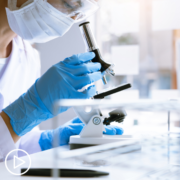


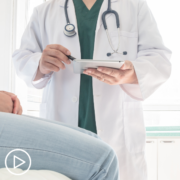
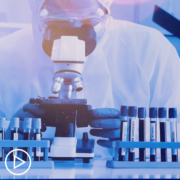
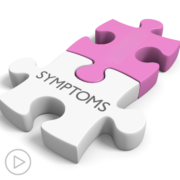
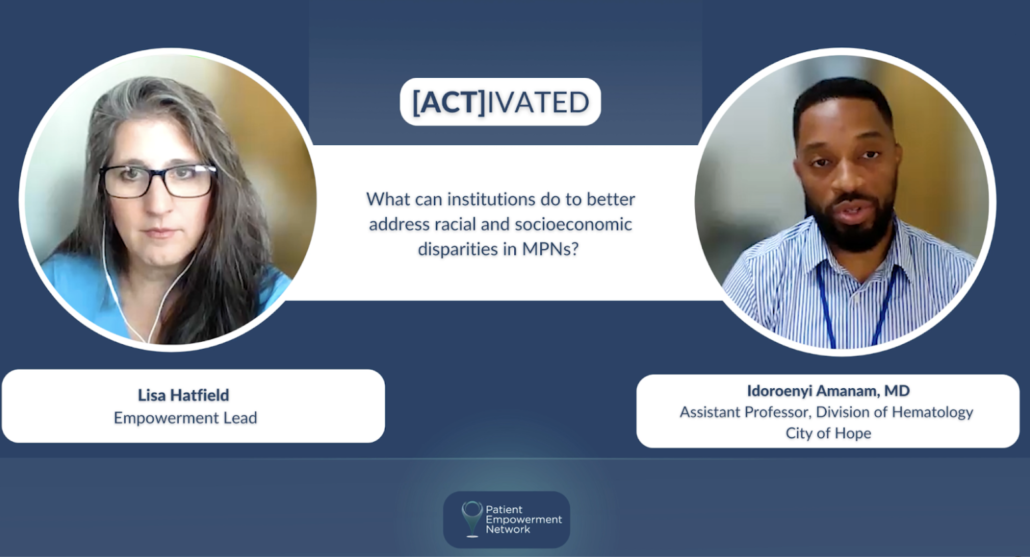
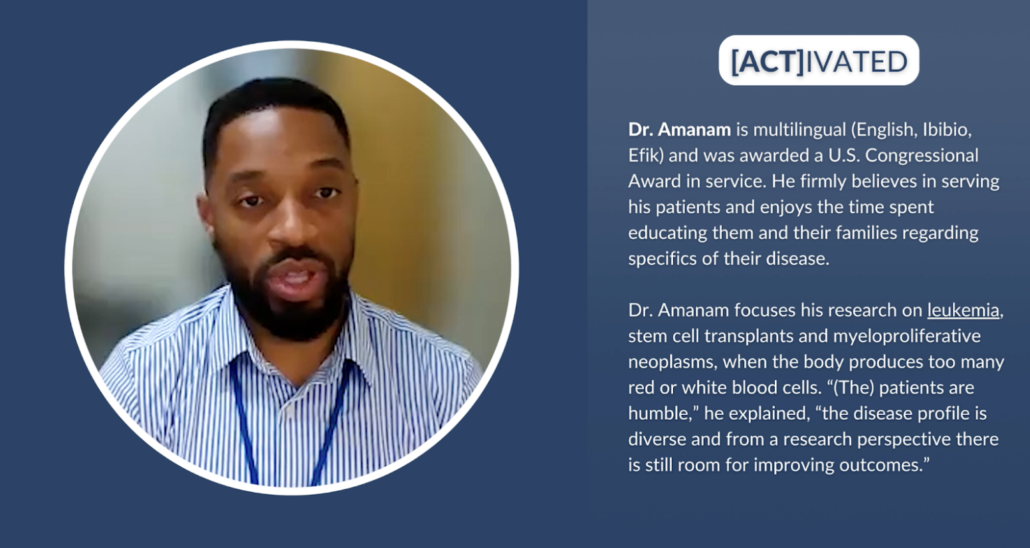
![[ACT]IVATED Program Logo](https://powerfulpatients.org/wp-content/uploads/Screenshot-2023-08-24-at-3.03.57-PM-1030x586.png)
